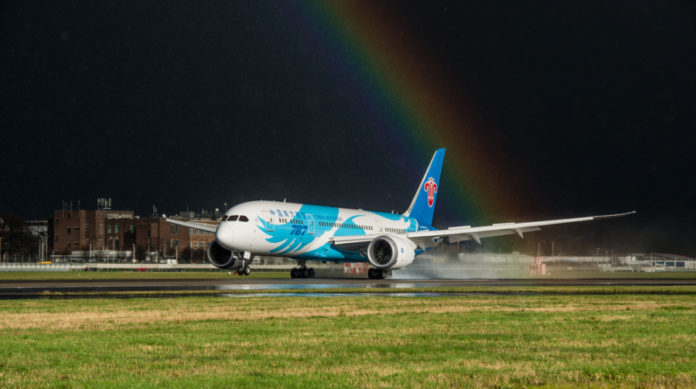

Heathrow Airport has gained new connections to China with flights to Wuhan and Sanya, adding over 6,000 tonnes of cargo capacity.
China Southern Airlines launched its thrice-weekly service to Wuhan, a mega-city known as ‘Chicago of China’ on 30 May, and will start flying to Sanya on Hainan Island twice a week from 12 July.
The service to Wuhan will operate on Mondays, Wednesdays and Fridays using an Airbus A330 and provide 3,744 tonnes of cargo capacity per year, while China Southern will fly to Sanya on Thursdays and Sundays also using an A330, providing 2,496 tonnes of cargo capacity a year.
Heathrow chairman, Lord Deighton says though the new routes are good news, British exporters remain at a disadvantage due to the airport’s lack of capacity.
He says: “A third runway will better enable British exporters to compete on a global stage, and we urge the Government to table its final National Policy Statement on expansion so that Parliament can vote and we can get on and deliver it.”
The Chinese ambassador to the UK, Liu Xiaoming adds: “I sincerely hope that these new routes will become bridges of mutual understanding and friendship between our two peoples, facilitating travels and exchanges between our two countries and giving fresh impetus to the Golden Era of the China-UK relationship.”
Wuhan and Sanya are the third and fourth new routes to China for Heathrow after Changsha and Xi’an but Heathrow is still missing links to Chengdu, Hangzhou, Kunming, Nanjing, Shenyang, Shenzhen, Tianjin, Urumqi, Xiamen and Chongqing, all of which are served directly by European rivals.
Last year, Hong Kong was the top Chinese destination served by Heathrow, followed by Shanghai, Beijing, Guangzhou and Qingdao.
Heathrow’s Export Climate Index for the first quarter (Q1), carried out by the Centre for Economics and Business Research says that the value of exports passing through the airport to non-European Union destinations increased by £2.9 billion compared to Q1 of 2017.
The index also says that there is a decline in sea freight and a risk that British exporters could look for alternative routes via European hub airports to get their goods and services to long-haul markets.










